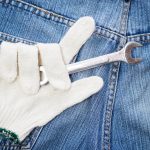How to Measure Tread Wear on Tires
Buying used tires is a great way to save money for your vehicle, but it’s important to only buy tires that are still in good working condition.
If you purchase used tires with tread wear, you will get less mileage out of your used tires and may experience performance issues when driving. Worn out tire treads can lead to a greater risk of blowouts, hydroplaning, or poor handling in snow and ice conditions. Make sure that you replace your tires before your tread is gone, as it may impact the safety of you and your passengers.
At Logel’s, our team has put together a list of key signs of tread wear. The best way to avoid getting used tires with tread wear is only purchase through trusted resellers, such as Logel’s. However, if you decide to buy used tires from third-party vendor, make sure that you check your used tires for these warning signs first.
Tread Wear Bars
The easiest way to determine tread wear is to examine the tread wear bars on your tires. Most new tires will come with tread wear bars or indicators. These are located inside the grooves on several spots around the tire. When your tire tread is worn down to the point where the tread is flush with the wear bar, it is a sign that your tire has 2/32″ of tread or less remaining. At this point, you should make it a priority to replace your tires.
If your tires don’t have wear bars, you will have to rely on some of these other indicators.
Tire Cracking
Most vehicle tires are exposed to brake dust, harsh chemicals, direct sunlight, as well as extreme environmental changes. These harsh elements may cause the tire rubber to wear and lose some of its elasticity. When this happens, surface cracks will appear. Often, these cracks are seen on the sidewalls or base of the tread grooves. The appearance of these cracks means that the tire is at the end of its life.
Uneven Wear
Uneven tire wear can be caused by a number of different things, such as improper air pressure, improper balance, problems with alignment, or bent wheels. Each of these problems causes a unique wear pattern, but they all have the same result. The tires performance is ruined and they are at an increased risk of popping.
Tread Depth
Whether the tires have even or uneven wear, tread depth is a good way of determining how much life is left in them. In most provinces in Canada, the minimum tread allowed on your tires is a depth of 4/32” in the winter and 2/32″ in the summer. When treads are worn below this level, the tires’ ability to perform safely in rain or snow is significantly reduced.
Tire Bubbles
Tire bubbles most commonly appear on the sidewalls as a result of the inner lining being damaged. This damage creates a small hole or tear that reduces the strength of the tires sidewalls. This type of damage to the tire can be caused by driving over potholes, curbs, or even train tracks. While the impact may go unnoticed by the driver, it can still be strong enough to damage the tire. Unfortunately, this type of damage means that it’s only a matter of time until the tire pops.
When you come to Logel’s Auto Parts in Kitchener for used tires, you can rest assured that we have already taken the time to evaluate the tires. During our evaluation, we look for these key areas of wear and only offer our customers the tires that pass our thorough inspection. If you’re looking for a new set of tires, contact us today!







